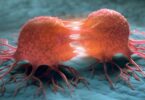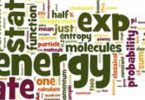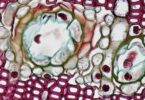Halogen Family Elements Questions:
DDT is
(a) A solid
(b) A liquid
(c) A gas
(d) A solution
The C – Cl bond in chlorobenzene as compared with C – Cl bond in methyl chloride is
(a) Longer and weaker
(b) Shorter and weaker
(c) Shorter and stronger
(d) Longer and stronger
For which one of the following properties of halogens the sequence F > Cl > Br > I holds good
(a) Electron affinity
(b) Electronegativity
(c) Atomic radius
(d) Boiling point
Which of the following properties increases on going down from F to I in Group VII-A of the periodic table?
(a) Electronegativity
(b) Volatile nature
(c) Ionic radius
(d) Oxidising power
Reaction of alkyl halides with aromatic compounds in presence of anhydrous AlCl3 is known as
(a) Friedal-Craft reaction
(b) Hofmann degradation
(c) Kolbe’s synthesis
(d) Beckmann rearrangement
The total number of stereoisomeric forms of C6H6Cl6 known is
(a) 6
(b) 7
(c) 8
(d) None of these
Related: Physics Gravitation Problems and Answers
The reaction between chlorobenzene and chloral in the presence of concentrated sulphuric acid produces
(a) Gammexane
(b) p,p-dichloro diphenyl trichloro ethane
(c) Chloropicrin
(d) Benzene hexachloride
Benzene hexachloride is prepared from benzene and chlorine in sunlight by
(a) Substitution reaction
(b) Elimination reaction
(c) Addition reaction
(d) Rearrangement
By heating a mixture of CHCl3 with silver powder, the compound formed is
(a) Acetylene
(b) Silver acetate
(c) Methanol
(d) None of these
To purify fluorine gas, fumes of HF are removed by
(a) Solid NaF
(b) H2 gas
(c) Solid KHF2
When ethyl bromide reacts with sodium acetylide the main product is?
(a) 1-butane
(b) 1-butene
(c) 1-butyne
(d) 2-butene
Related: Quiz theory the dispersion of light
When chloroform is exposed to air and sunlight, it gives:
(a) Carbon tetrachloride
(b) Carbonyl chloride
(c) Mustard gas
(d) Lewsite
Which of the following compounds does not undergo nucleophilic substitution reactions?
(a) Vinyl chloride
(b) Ethyl bromide
(c) Benzyl chloride
(d) Isopropyl chloride
Which of the following conditions is used to find atomic Cl2 from molecular Cl2?
(a) High temperature, high pressure
(b) Low temperature, high pressure
(c) High temperature, low pressure
(d) Low temperature, low pressure
One of the following that cannot undergo dehydro-halogenation is
(a) Iso-propyl bromide
(b) Ethanol
(c) Ethyl bromide
(d) None of these
Among the following one with the highest percentage of chlorine is?
(a) Chloral
(b) Pyrene
(c) PVC
(d) Gammexene
Related: Purification of Organic Compounds Questions
Iodine dissolves readily in
(a) Water
(b) Potassium iodide
(c) Carbon tetrachloride
(d) Alcohol
The bleaching action of chlorine is due to
(a) Oxidation
(b) Reduction
(c) Hydrolysis
(d) Its acidic nature
The type of bonding in HCl molecule is
(a) Pure covalent
(b) Polar covalent
(c) Highly covalent
(d) H-bonding
Which one among the following non-metals liquid at 25oC?
(a) Bromine
(b) Carbon
(c) Phosphorus
(d) Sulfur
Which of the following elements is extracted commercially by the electrolysis of an aqueous solution of its compound?
(a) Chlorine
(b) Bromine
(c) Aluminum
(d) Calcium
Related: questions on Biot Savart law
Ethylene difluoride on hydrolysis gives
(a) Glycol
(b) Fluoroethanol
(c) Difluoroethanol
(d) Freon
An important insecticide is obtained by the action of chloral on chlorobenzene. It is
(a) BHC
(b) Gammexene
(c) DDT
(d) Lindane
Bleaching powder loses its power of keeping for a long time because
(a) It changes into calcium hypochlorate
(b) It changes into calcium chloride and calcium hydroxide
(c) It absorbs moisture
(d) It changes into calcium chloride and calcium chlorate
The reactivity of ethyl chloride is
(a) More or less equal to that of benzyl chloride
(b) More than that of benzyl chloride
(c) More or less equal to that of chlorobenzene
(d) Less than that of chlorobenzene
Chloropicrin is used as
(a) Solvent
(b) Anaesthetic
(c) Perfume
(d) Tear gas
Related: questions on Biotechnology and its applications
Ethylene reacts with bromine to form
(a) Chloroethane
(b) Ethylene dibromide
(c) Cyclohexane
(d) 1-bromo propane
Chlorine cannot be used
(a) As bleaching agent
(b) In sterilization
(c) In preparation of antiseptic
(d) For extraction of silver and copper
Chlorine cannot displace
(a) Fluorine from NaF
(b) Iodine from NaI
(c) Bromine from NaBr
Which of the following halogens does not form oxyacid?
(a) Fluorine
(b) Chlorine
(c) Bromine
(d) Iodine
When chlorine water is exposed to sunlight, O2 is liberated. Hence:
(a) Hydrogen has little affinity to O2
(b) Hydrogen has more affinity to O2
(c) Hydrogen has more affinity to Cl2
(d) It is a reducing agent
Related: Halogen containing Organic Compounds Quiz
Which of the following oxidizes H2O to oxygen?
(a) Chlorine
(b) Fluorine
(c) Bromine
(d) Iodine
Which of the following halogens is solid at room temperature?
(a) Chlorine
(b) Iodine
(c) Bromine
(d) Fluorine
Which of the following chemicals contains chlorine?
(a) Fischer salt
(b) Epsom salt
(c) Fremy’s salt
(d) Spirit of salt
Chlorine dioxide is best prepared by passing dry
(a) Chlorine gas over hot HgO
(b) Chlorine and oxygen gas over hot pt catalyst
(c) Hydrogen chloride and oxygen over silver oxide
(d) Chlorine over hot silver chlorate
Which of the following statements is not true?
(a) HF is a stronger acid than HCl
(b) Among halide ions, iodide is the most powerful reducing agent
(c) Fluorine is the only halogen that does not show a variable oxidation state
(d) HOCl is a stronger acid than HOBr
Related: Stoichiometry questions (practice)
Unlike other halogens fluorine does not show higher oxidation states because
(a) It is highly electronegative
(b) It has no d-orbitals
(c) Its atomic radius is very small
(d) The F– ion is stable and isoelectronic with neon
The chief source of iodine in which it is present as sodium iodate is
(a) Sea weeds
(b) Caliche
(c) Carnallite
(d) Iodine never exists as sodium iodate
A Grignard’s reagent may be made by reacting magnesium with
(a) Methyl amine
(b) Diethyl ether
(c) Ethyl iodide
(d) Ethyl alcohol
Bleaching powder is obtained by passing chlorine on
(a) Lime stone
(b) Quick lime
(c) Slaked lime
(d) Pure lime
Preparation of alkyl halides in laboratory is least preferred by
(a) Treatment of alcohols
(b) Addition of hydrogen halides to alkenes
(c) Halide exchange
(d) Direct halogenation of alkanes
Related: Quiz on Bone Structure – Anatomy and Physiology
What is the main product of the reaction between 2-methyl propene with HBr?
(a) 1-bromo butane
(b) 1-bromo-2 methyl propane
(c) 2-bromo butane
(d) 2-bromo-2 methyl propane
The alkali metal halides are soluble in water but LiF is insoluble because
(a) It is amphoteric
(b) The LI – F bond is highly ionic
(c) Its lattice energy is high
(d) Li+ ion is least hydrated
Sodium chloride when heated with conc. H2SO4 and solid potassium dichromate gives
(a) Chromic chloride
(b) Chromyl chloride
(c) Chromous chloride
Among halogens fluorine is most oxidising because
(a) Fluorine has highest electron affinity
(b) Fluorine is most electronegative
(c) Dissociation energy for fluorine molecule is lowest
Chlorine is used in water for
(a) Killing germs
(b) Prevention of pollution
(c) Cleansing
(d) Removing dirt
Related: Group 18 Elements (Noble Gases) MCQ
Fluorine is prepared by
(a) Oxidation of HF
(b) Electrolysis of KF
(c) Electrolysis of fused KHF2
(d) Decomposition of HgF2
Hydrogen has a tendency to gain one electron to acquire a helium configuration. In this respect, it resembles
(a) Halogens
(b) Actinides
(c) Transition elements
(d) Alkali metals
Which of the following statements is correct?
(a) Only chlorine and bromine form oxy-acids
(b) All halogens form xy-acids
(c) All halogens except fluorine form oxy-acids
(d) Only iodine forms oxy acids
A one liter flask is full of brown bromine vapor. The intensity of the brown color of vapor will not decrease appreciably on adding to the flask some
(a) Pieces of marble
(b) Carbon disulfide
(c) Carbon tetrachloride
(d) Animal charcoal powder
The bleaching action of the bleaching powder is due to the liberation of
(a) Chlorine
(b) Molecular oxygen
(c) Nascent oxygen
(d) Calcium carbonate
Related: Magnetic Effect of Electric Current mcq
A salt, which on heating with conc. H2SO4 gives violet vapors, is
(a) Iodide
(b) Nitrate
(c) Sulfate
(d) Bromide
When I2 is dissolved in CCl4, the color that results is:
(a) Brown
(b) Violet
(c) Colorless
(d) Bluish green







Seriously Thank you for your help, this site has been a great relief from the books,
Super-Duper site! I am loving it!! Will come back again taking you feeds also, Thanks.